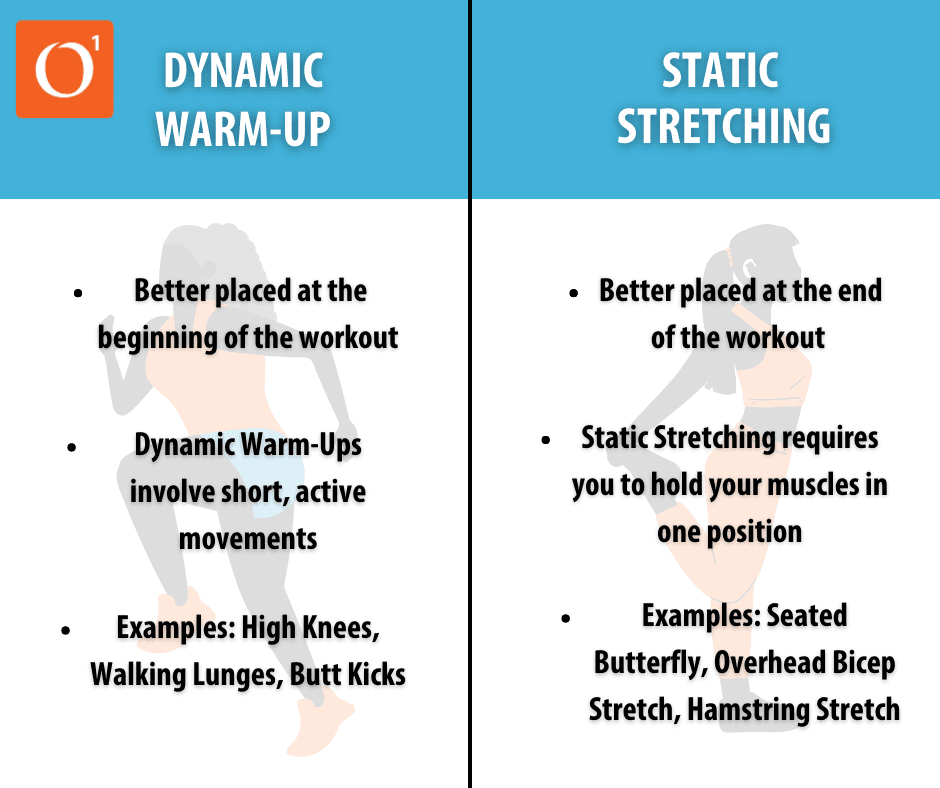DYNAMIC WARM-UP FOR COLD WEATHER
As the weather continues to fluctuate, it’s important we’re aware of how to adapt our workouts for cold, chilly months! A dynamic warm-up is always important, but it becomes essential as the temperatures drop.
In colder weather, muscles naturally tighten up through the loss of heat. This can decrease our range of motion and blood flow, while increasing our chances of injury. However, if we complete a series of dynamic warm-ups before being active, we can set our bodies up for success.
WHAT IS A DYNAMIC WARM-UP AND HOW IS IT DIFFERENT FROM STATIC STRETCHING?
A dynamic warm-up can be described as simply a series of movements performed prior to being active. This is different from Static Stretching because in static stretching you are holding a singular stretch for a longer period of time.
You’ll want to save your static stretching for after your workouts. This will allow your body time to cool down and relax your muscles.

While dynamic warm-ups are designed to be held for a shorter amount of time, compared to static stretching, the goal is truly to “warm up” our body. So, try not to rush these stretches or push too hard. Remember, this is not your workout. You are just warming your body up for activity.
Take into consideration the activity you have planned; this should determine what your dynamic warm-up will look like. A dynamic warm-up should last anywhere between 5-10 minutes, and you should start with lower impact movement and work up to higher impact movement. The goal is to progressively warm up your body.
DON’T KNOW WHERE TO START?
Try one or all of the following activities:
- High Knees
- High Kicks
- Lunge Walks
- Hip Openers
- Side Shuffles
- Butt Kicks
- Skips
Need more information? Click here for step-by-step instruction on how to complete each activity.
Again, completing a dynamic warm-up ensures your body is loose and ready for physical activity. And remember, completing a series of dynamic warm-ups is extra important in these colder months when our muscles are quicker to tighten and get stiff.